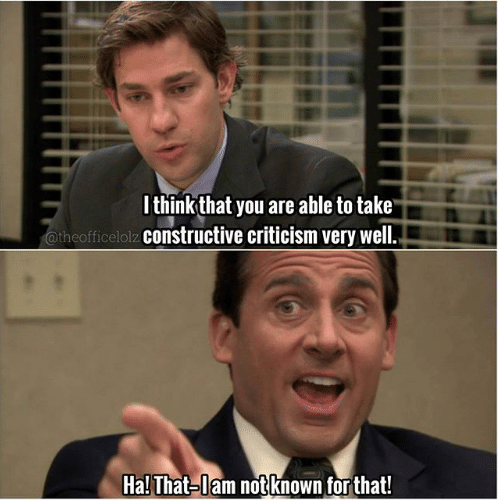Changing business culture retrospectively.
Culture.
‘Culture’, It’s a funny word, isn’t it? In part because it means so many different things to different people. Whether you value work life balance or feeling like part of a team, or maybe even perks such as free lunches or tea & coffee. Maybe it’s all about the cash! What’s important to one person isn’t always the ‘thing’ that someone else needs to thrive. Culture is so much more though than some of these common things, as I’m sure you know.
Resonating through the back rooms & board rooms of our company’s offices & places of work, good culture is key to inspiring people to do good work. That very culture has the power to make us or break us. Get it wrong at your peril! We read article after article about office politics, or leadership or various ‘top 10’ lists of what to do and what not to do when trying to run a business but the very complexity of instilling a culture retrospectively is a massively complex and challenging task.
Leaders look to the workforce to create culture, often missing the fact it is those very leaders who are responsible for building it in the first place and leading by example! Yeah that means you!
This retrospective culture-adoption I find is only occasionally broached, but rarely are strategies and tactics implemented & then executed to really create a positive culture that will ensure you win big, long term in your business. Trying to do it for a start-up is easier, but when you already have a monolithic slab of a business on the table, where on earth do you start? I often here C-members baulk at the types of activities needed to instill positive culture, bemoaning the fact it doesn’t have a visible & direct ROI. This is short term thinking. The ROI you will get will be paid in the years to come if you get it right.

Leaders of companies often fail to understand or see the negative impact a bad culture can have not only on their business but also the people, all too often. And when you insert people into a space with a bad culture, bad behaviour breeds and the culture often becomes worse. This has a compounding effect ensuring day to day all you can do is manage the churn. Because that’s what will happen, churn! The churn of people, politics, harassment & bad blood. It sounds dramatic, but I see this in company after company to this day and it’s something I’m passionate about at least exploring some of the the options on how to resolve.
The impact bad culture has on the end product, service or business is profound. Ultimately the impact it can have on people can be fatal. A good insight article here on this problem in the UK from the INDEPENDENT
Taking Criticism isn’t nice.
 No matter how many times people say they are ok with it, the reality is as a human being we’re just not wired to take critique well. Some of us might enjoy the opportunity to learn & develop after receiving critique, but often in a world which is ever more geared towards culpability, blame & subsequent compensation when someone’s to blame, getting negative feedback is something we shy away from in droves. We are impotent to do anything in case of doing it wrong. As we use online media to in effect, turn us all into our own PR agents we look at ourselves though an almost positive-only lense in everything that we do. We’re hooked on the dopamine releasing pat on the back, the Facebook like, the ‘yeah, you did good’ but dread our 1-2-1 with our manager, looking in a mirror, or hearing a loved one tell us something bad.
No matter how many times people say they are ok with it, the reality is as a human being we’re just not wired to take critique well. Some of us might enjoy the opportunity to learn & develop after receiving critique, but often in a world which is ever more geared towards culpability, blame & subsequent compensation when someone’s to blame, getting negative feedback is something we shy away from in droves. We are impotent to do anything in case of doing it wrong. As we use online media to in effect, turn us all into our own PR agents we look at ourselves though an almost positive-only lense in everything that we do. We’re hooked on the dopamine releasing pat on the back, the Facebook like, the ‘yeah, you did good’ but dread our 1-2-1 with our manager, looking in a mirror, or hearing a loved one tell us something bad.
We’re too fat, too pig headed, too stubborn, etc. We don’t like hearing these things – so we simply don’t seek the feedback at all.
Add into the mix that critique being received about something you’ve created or built, be it product or a company. The risks taken, the sacrifices endured, the hours you have put in, and you become blinded by your very own baby.
That represents your biggest weakness but is totally understandable at the same time. I’ve been there and I hate taking criticism. It still represents one of my biggest weaknesses to this day.
Building positive adoption
Over the past few years, more and more research shows positive environments produce positive benefits specifically to engagement, relationships, health & ultimately the bottom line. According to Gallup,
‘ disengaged workers had 37% higher absenteeism, 49% more accidents, and 60 more errors and defects. In companies with low employee engagement scores, they experienced 18% lower productivity, 16% lower profitability 37% lower job growth and a 65% lower share price over time.
Directly resulting in higher turnover!
What can we do to change?
So here’s my top six tips that I’ve been responsible for implementing, and experienced either as a leader, or shoe-horned this behaviour into leaders, which has had a remarkable effect on culture. These are geared towards actionable things you can do even retrospectively, today to kick start a positive culture.
10) Kindness – it goes a long way. If you’re CEO, be visible. Speak to everyone. The buck always stops with you and make sure everyone knows it. Go out of your way to learn about everyone, what drives & motivates them. What they need and how you can make their life better. Sounds logistically impossible if you’ve a workforce of hundreds? It’s not. And the positive impact you have on your workforce will be profound.Quick hit – Go and walk your floor. Talk to people. Spend however long it takes to get to know everyone by name.
5) Celebrate wins – I rarely see companies making a big deal about the good times. Arrange all colleague parties, get to know people’s birthdays and ensure they are celebrated. Honouring wins and milestones improves morale massively.
Quick hit – Arrange a night out for everyone. Put some money behind the bar and arrange some hospitality. Say thank you. Publicly.
4) Be visible – As a leader, engage with your workforce. Show culpability yourself & some humility when things go wrong. The bigger the company the more important this is. The cleaner should know what’s going on in the company just as much as the CMO, and everyone in between. Pull no punches both ways, kick ass when it’s needed, but kiss ass when it’s warranted. Your workforce will thank you for it.
Quick hit – Do video keynotes, ‘town hall’s or ‘state of the nations’. Become your own internal YouTube star. 30 minutes, talk about the company, your dreams, fears & insecurities. Show you’re human. Tell people why they are here and why they should work for you. Remember, this is your dream, not theirs. Be sincere.
3) Cut the bullshit – Be authentic and keep your intent pure. Peoples bullshit radars are massively hyper-tuned these days as we’re indoctrinated by insincerity on a daily basis. You actually have opportunity here to be heard without very much effort at all because of this. Simply, be.a.human. Quick hit – Ensure the shadows you cast are positive ones.
2) Trust & empower people – if you can’t trust people, you’ve hired the wrong people. If you can’t trust anyone, then the problem is lies with you. People need autonomy as well as being led, the trick being is finding the right balance between the two and then executing it. Empower people to do their job, with the right tools, freedom and flexibility. That way if they fuck up, they have no excuse.
Quick hit – ask people do they have what they need? Ask people are they happy and what you can do to make their job or life better.
1) Know your place – as a leader you’re mad thinking someone in accounts or the developer over in the Engineering team value the importance of the company as much as you do. Stop expecting people to do that – it’s dumb. Find out what THEY VALUE and inspire them. Do your job.




